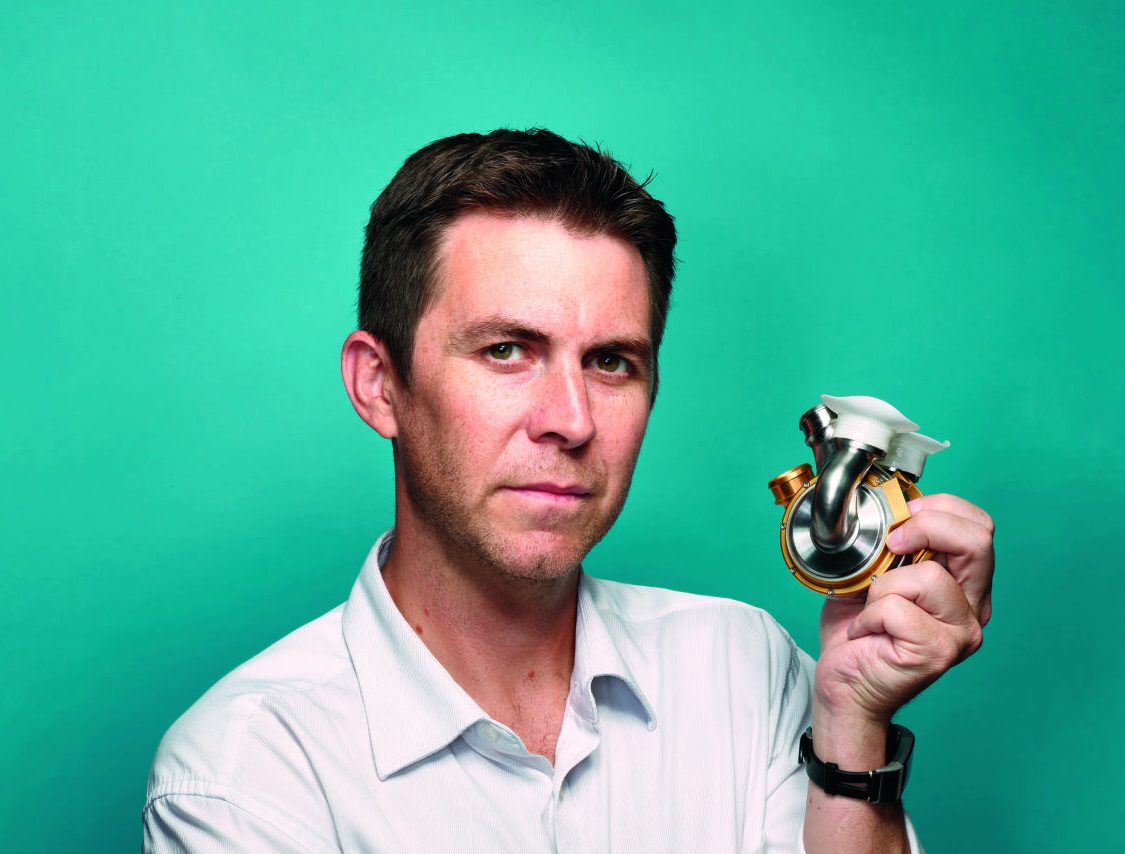Six months after its launch, TikTok Shop has sold more than $1 billion worth of products — some of questionable quality, including counterfeits.

Earlier this week, a woman who goes by the name “Tokyo” went live on TikTok, standing in front of an enormous anatomically-correct mouth before 100-plus viewers who were watching her in real time. “Aiding in gum health, aiding in getting fresher breath! This is able to brighten and whiten your smile by two-and-a-half shades!”
She was hawking an $7.49 mouthwash alternative called “pulling oil” that’s currently the best-selling item on TikTok Shop. Made by her employer, a company called GuruNanda, the pulling oil has sold more than 1.5 million units through TikTok’s e-commerce section, racking up over $11 million in sales since TikTok Shop launched in the United States in September 2023., according to TikTok’s data. Every time a customer places an order, Tokyo rings a silver bell.
The pulling oil, which consumers are supposed to swish around their mouths twice a day for two to 10 minutes, has no proven medical benefits, according to the American Dental Association. GuruNanda’s website explicitly notes that it cannot eliminate cavities or reverse periodontal disease — claims the influencers who market it often make.
THE BESTSELLING ITEMS ON TIKTOK SHOP
Vendors have even made millions selling health supplements and possibly counterfeit headphones.
TikTok declined to respond to Forbes’ questions concerning the efficacy of GuruNanda’s product, among other queries.
In TikTok Shop’s first six months of existence, the new online retail platform has been flooded with a host of inexpensive and in some cases knockoff products more likely to appear at a dollar store than a mainstream retailer. For instance, a $5.35 “car air freshener” with scents like “barbershop” and “fruity cereal” has sold over 729,000 units. An $18 “Surprise 3D Dragon Egg” has sold over 150,000 units.
“If I knew the exact reason and formula I would be making [these videos] every day of my life.”
Puneet Nanda, CEO, GuruNanda
TikTok Shop is already approaching a projected annual revenue of around $4 billion based on sales figures by YipItData, an analytics firm. That would put it on par size-wise with Abercrombie & Fitch, which recorded $4.28 billion in revenue last year.
The most successful products on TikTok Shop are often apparel, beauty or health-related. A $25 bottle of 60 “MultiMineral Sea Moss” capsules has been sold over 205,000 times; a $14 “detangling hair brush” has reached over 853,000 units sold. But most importantly, they’re cheap. Two brothers in Brooklyn have made over $1 million in revenue selling homemade lemon turmeric soap ($4.50 plus shipping) in just five months. “We work from 4 a.m. in the morning until midnight,” Rusty Fields, 25, told Forbes.
Even the founder of GuruNanda, maker of the super-popular pulling oil, isn’t sure why he’s had such a runaway hit on TikTok with a product his company has been selling in regular drug stores for years. “If I knew the exact reason and formula I would be making [these videos] every day of my life,” Puneet Nanda, who was recently named a TikTok Shop spokesperson, told Forbes.
Virality is built into the app itself, but TikTok Shop has also incentivized other creators to piggyback on a successful product’s traction by hawking it themselves — in exchange for a commission on each sale. That, in turn, fuels virality. “It’s a more democratic, much more chaotic reimagination of QVC,” Dan Frommer, a retail analyst and publisher of The New Consumer, wrote in a recent newsletter.
For some consumers, this popularity is proof of quality. “[GuruNanda] was one of the best-selling products on TikTok Shop, so I assumed it was a good product,” Dillon Latham, a 19-year-old TikToker in Virginia, told Forbes. He said he’s made over $3,000 in commissions from promoting GuruNanda products.
But inconsistency has made the platform less compelling for bigger companies. “This is terrible for normal brands because none of this is replicable,” Juozas Kaziukėnas, the CEO of Marketplace Pulse, an independent e-commerce analysis firm told Forbes. “It’s like replicating user-generated content, there’s no formula – but when it works, it works beautifully.”
“Chinese companies aren’t just manufacturing our fast-selling cheap stuff anymore; they’re quickly and effectively moving up the stack to become the merchant, too.”
Dan Frommer, The New Consumer
Worse: there are a host of counterfeits. You can buy a fake Apple Watch, available for only $6 (over 253,000 sold), or a set of $23 Lenovo Thinkplus X15 wireless earbuds (over 233,000 units sold), which the company does not sell in the U.S. (“It could be either a gray market import or a fake, but we can’t tell from the image/link alone,” Wendy Fung, a Lenovo spokesperson, told Forbes by email. Apple did not respond to Forbes’ request for comment.)
Laura Perez, a TikTok spokesperson, told Forbes in an email that the company “continuously enforce[s] strict rules against counterfeit products, invest[s] heavily in detection and reporting, and provide[s] an IP Protection Center for brands.”
Bigger companies have been “more wary of TikTok Shop because of the risk associated with the platform and the fear of counterfeit and fake products,” Jasmine Enberg, an analyst with eMarketer, told Forbes. And some American brands have struggled to gain traction: Estee Lauder’s Double Wear foundation ($49), for instance, has sold barely over 100 units.
That could spell trouble for TikTok’s e-commerce ambitions if it were to look toward competing with the true behemoth of online retail: Amazon. It is reportedly aiming to reach $17.5 billion in sales in the United States in 2024, according to Bloomberg. But for now, it appears to be more focused on going after the same market as two fellow China-based e-commerce rivals: Shein and Temu, which have grown extremely quickly by selling low-priced clothing, housewares and other inexpensive items.
“Temu is already around as big as Shein was a year ago, and TikTok Shop is already around as big as Temu was a year ago,” Frommer wrote in the same newsletter. “Chinese companies aren’t just manufacturing our fast-selling cheap stuff anymore; they’re quickly and effectively moving up the stack to become the merchant, too.”
Still, some of TikTok Shop’s early growth has started to slow. According to YipItData, TikTok Shop’s revenue went from $261 million in October 2023 to $349 million in December 2023, the most recent month for which data is available. But between January and February 2024, TikTok Shop sales were flat.
Another challenge to its growth: rising fees for sellers. On April 1, TikTok raised its referral fees — the cut that it takes on a given sale — from 2 to 6 percent, with another rise to 8 percent planned for July 1.
Even for its greatest success story, TikTok Shop has come with headaches.
Live broadcasts are a money-loser, Nanda said, given the cost of building a set, not to mention the time lost of pulling away his employees from doing their regular jobs (some work reception among other administrative jobs). Plus, he said, speaking non-stop for hours in front of a camera is exhausting.
“They’re not happy doing them,” he told Forbes last month. “We shuffled three people in the last five days.”
But the head of GuruNanda feels he has no choice if he wants to keep riding the TikTok virality cycle and keep his own counterfeiters at bay: “There were too many dupes doing lives,” he said, hawking knockoff versions of his pulling oil.
“What they were saying was, ‘This is the real product,’ and they were linking the dupe product to it,” he said. “We started doing lives so we own the space instead of having someone dupe it for us.”
This article was first published on forbes.com and all figures are in USD.
Look back on the week that was with hand-picked articles from Australia and around the world. Sign up to the Forbes Australia newsletter here or become a member here.


